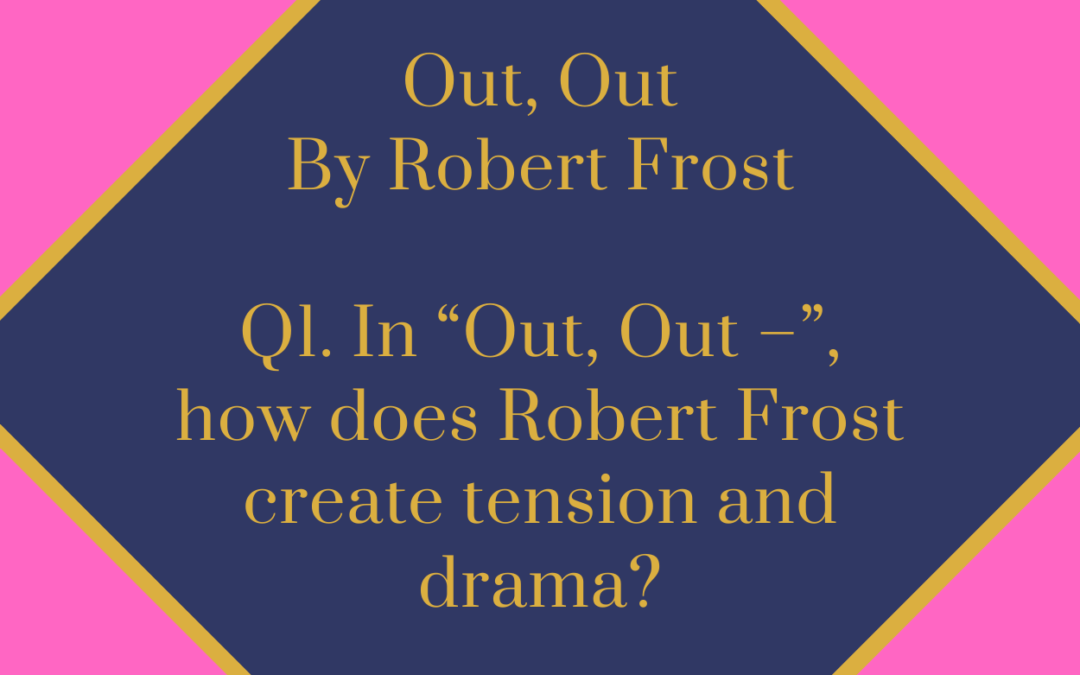Edexcel English IGCSE: Out, Out- by Robert Frost
Q1. In “Out, Out –”, how does Robert Frost create tension and drama?
In your answer you should think about:
- The description of the saw;
- The description of the boy;
- How the accident is described;
- The use of language.
You should refer closely to the passage to support your answer. You may use brief quotations.
Edexcel English IGCSE Model Essay by an Expert
“Out, Out –” portrays a tragic event in which a young boy loses his life in a terrible accident. Throughout the poem, the writer builds tension to prepare the reader for an awful event, and the accident itself is described with shocking drama.
From the beginning of the poem, the saw is portrayed as alarming, which implies that it might do something violent. The repetition of the onomatopoeic description, “snarled and rattled” is ominous, particularly when it is repeated twice on one line, increasing the pace of the poem. The word “snarled” personifies the saw, making it sound as though it is an angry animal. This personification is also evident in the lines “made dust and dropped stove-length sticks”: it suggests that the saw is doing the work itself. The writer engages the reader’s sense of hearing with the alliteration of ‘d’ and ‘s’ on this line. The onomatopoeia and alliteration throughout the beginning of the poem reflect the noisiness of the saw. Through the extended personification, the saw is presented as an ominous character with evil intent.
The writer creates tension as he builds up to the description of the accident. The peacefulness and beauty of the surroundings is incongruous with the violence of the saw. The harsh sounds used to describe the saw are in tension with the gentle sibilance used to describe the natural setting: “Sweet-scented stuff”. The tension is temporarily released with the line, “And nothing happened”. This anti-climax provides some relief to the reader, but this is quickly undermined when the writer introduces an element of regret: “I wish they might have said” that the boy could stop work. The introduction of the first person voice here shows the strength of the writer’s regret, and reveals to the reader that something awful is going to happen to the boy. The tension exists in not knowing what exactly will happen.
The description of the accident itself is very dramatic. The exclamation, “But the hand!”, is sudden, inducing surprise and shock. It brings the reader’s attention from the explanation of what happened to the terrible consequences of the accident. The severity of the incident is heightened with the image of “life” which is “spilling” from his hand. By using the word “life” instead of “blood”, the writer hints that the accident could life-threatening. The boy’s speech contributes to the drama of the situation. His speech is fragmented and urgent, with the repetition of “Don’t let him” showing his increasing desperation. This evokes sympathy for the boy, and captures his terror.
The boy’s death is described with simplicity and a striking lack of drama. Contrasting the drama and tension of the build-up, the boy’s life seems to slip away quietly and without incident. This contrast captures the fragility of life, which is one of the key messages of the poem.



